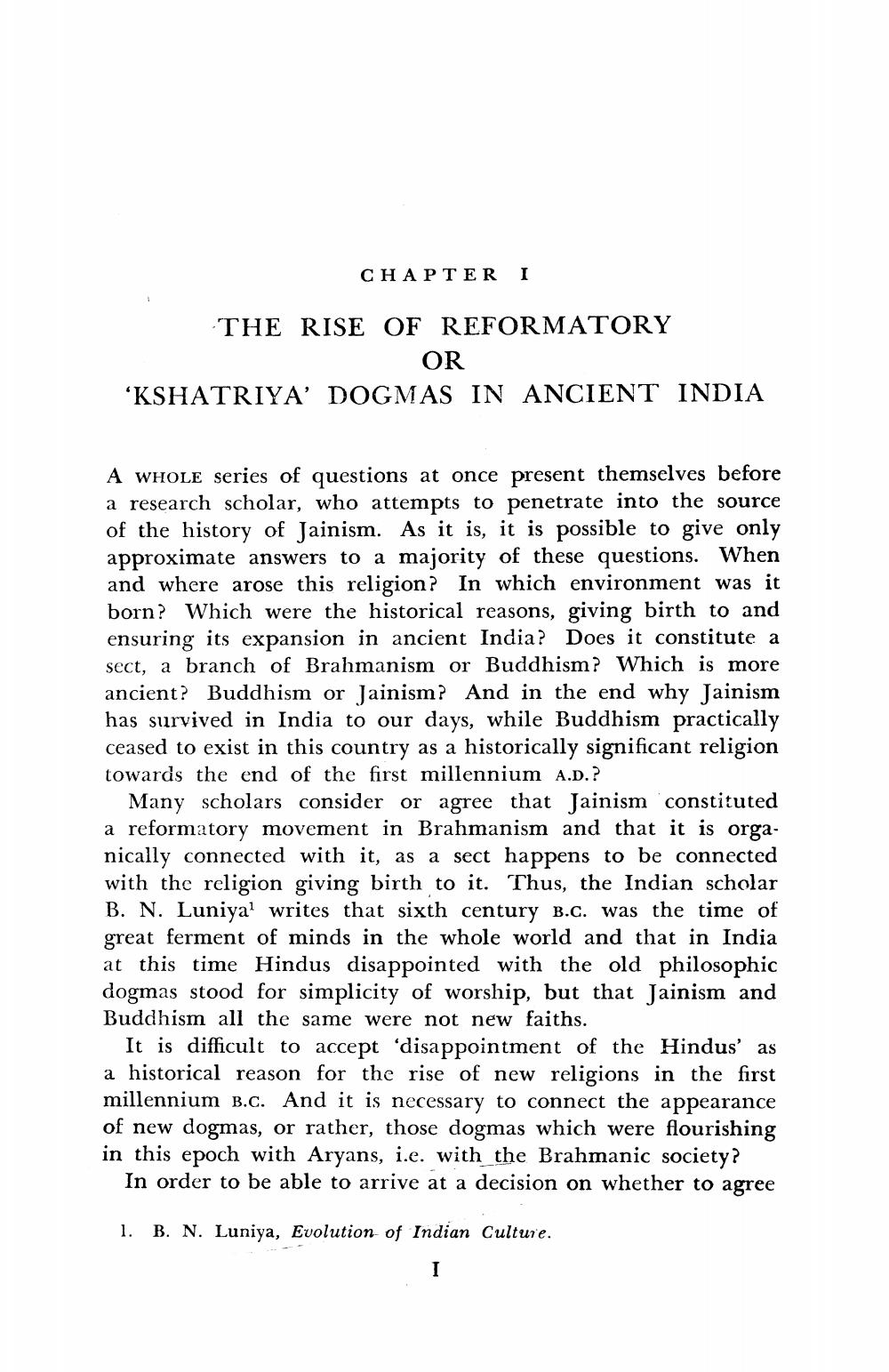________________
CHAPTER I
THE RISE OF REFORMATORY
OR ‘KSHATRIYA’ DOGMAS IN ANCIENT INDIA
A WHOLE series of questions at once present themselves before a research scholar, who attempts to penetrate into the source of the history of Jainism. As it is, it is possible to give only approximate answers to a majority of these questions. When and where arose this religion? In which environment was it born? Which were the historical reasons, giving birth to and ensuring its expansion in ancient India? Does it constitute a sect, a branch of Brahmanism or Buddhism? Which is more ancient? Buddhism or Jainism? And in the end why Jainism has survived in India to our days, while Buddhism practically ceased to exist in this country as a historically significant religion towards the end of the first millennium A.D.?
Many scholars consider or agree that Jainism constituted a reformatory movement in Brahmanism and that it is organically connected with it, as a sect happens to be connected with the religion giving birth to it. Thus, the Indian scholar B. N. Luniyal writes that sixth century B.c. was the time of great ferment of minds in the whole world and that in India at this time Hindus disappointed with the old philosophic dogmas stood for simplicity of worship, but that Jainism and Buddhism all the same were not new faiths.
It is difficult to accept disappointment of the Hindus' as a historical reason for the rise of new religions in the first millennium B.C. And it is necessary to connect the appearance of new dogmas, or rather, those dogmas which were flourishing in this epoch with Aryans, i.e. with the Brahmanic society?
In order to be able to arrive at a decision on whether to agree
1. B. N. Luniya, Evolution of Indian Culture.




